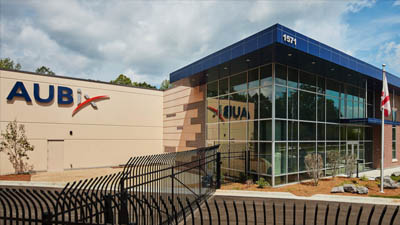In the Northwest section of Massachusetts resides the small, traditional New England town of Greenfield. Greenfield, MA has a population of about 17 thousand residents and is roughly 2.5 hours west of Boston. It has the same challenges as most small towns in America. Over the years, manufacturing jobs have dwindled making it difficult for the city to retain and attract new residents and businesses. In addition, roughly 40% of the town was underserved with broadband Internet access due to the lack of investment in network infrastructure from the Internet service providers servicing the town.
Recognizing the need to change the town dynamics and create a more vibrant community, the Mayor of Greenfield set forth a vision to give broadband Internet access to every citizen and business without any cost to the town taxpayers. Connecting the city would be a significant first step in creating a more vibrant town and enhance the lifestyle of the town citizens by increasing the opportunity for new businesses and residents. To make this happen, the town created a non-profit company called Greenfield Community Energy and Technology (GCET). The goal was to provide public Wi-Fi across the entire town and by leveraging the outdoor Wi-Fi network, GCET could also offer residential and small business broadband Internet services.
Powering an 802.11ac outdoor transceiver with PoE
Because Wi-Fi signals have a difficult time getting through certain obstacles including walls, concrete, steel, etc., GCET needed a solution that would work in all situations. They developed an innovative solution that uses an 802.11ac outdoor transceiver to pick up the outdoor Wi-Fi signal and Ethernet to bring the connection inside the home. The transceiver is typically mounted outside the home (or even inside the home by a window) in a location that allows it to pick up the best Wi-Fi signal. The transceiver is powered through Power over Ethernet (PoE), so there are no power requirements outside the home. In this particular case, the transceiver used is an inexpensive add-on and creates a cost-effective way to leverage the outdoor Wi-Fi network for the residential and small business broadband service. 
Bringing high-performance broadband services to underserved communities
The Ruckus Wi-Fi solution enabled GCET to deliver high-performance broadband services at competitive prices, which include mobile Internet and phone access within the city limits. This innovative solution is creating a lot of interest from other towns who see it as a way to provide underserved communities or low-income households with broadband services. For towns with digital divide issues, this is a cost-effective way to reduce or potentially eliminate digital equity.
In fact, GCET is able to offer a basic broadband residential service for $10/month based on this solution. This results in free broadband service for low-income households in the United States who qualify for the $10/month Lifeline program. With this type of approach, other cities can adapt the same innovative solution. The GCET approach to public Wi-Fi and residential/business broadband Internet service is a creative solution that will benefit other cities to also offer the latest broadband technology to its citizens, including the underserved areas and low-income areas where digital divide is a challenge. For additional information on the outdoor Wi-Fi solution deployed by GCET, read the Town of Greenfield case study.















